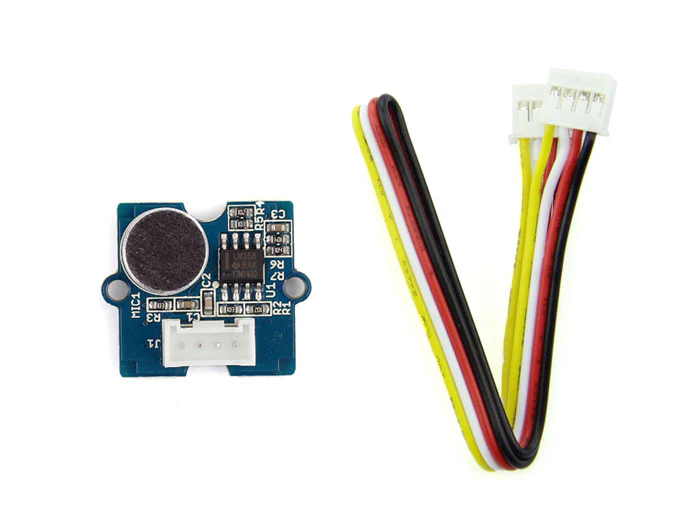
Overview
The main component of the module is a simple microphone, which is based on the LM386 amplifier and an electret microphone. This module’s output is analog and can be easily sampled and tested by an Arduino.
Features:
- Easy to use
- Provides analog output signal
- Easily integrates with Logic modules on the input side of Grove circuits
- Compatible with the Seed Grove System
Tech specs
|
Item |
Value |
|
Operating Voltage Range |
3.3/5 V |
|
Operating Current(Vcc=5V) |
4~5 mA |
|
Voltage Gain(V=6V, f=1kHz) |
26 dB |
|
Microphone sensitivity(1kHz) |
52-48 dB |
|
Microphone Impedance |
2.2k Ohm |
|
Microphone Frequency |
16-20 kHz |
|
Microphone S/N Radio |
54 dB |
Get Inspired

In a world where energy bills are climbing and the environment is on our minds, keeping tabs on how we use energy at home has become a smart move. Every gadget we plug in impacts our wallets and the planet. That's where home energy monitoring comes in – giving us real-time info on how we're using energy, so we can save money and do our bit for the Earth. This post delves into home energy monitoring, spotlighting how to track your energy consumption using the Arduino Cloud and a Tuya-compatible energy meter with Node-RED acting as a middleware. What's the deal with home energy monitoring? Home energy monitoring is all about watching how much energy we're using at home. It's not just about paying the bills; it's about knowing what's eating up energy, so we can be smarter about it. Why does it matter? Well, first off, it helps us be more aware. When we can see which devices are energy hogs (looking at you, always-on TV), we can take action. And with energy costs going up, finding ways to save money is a no-brainer. Plus, with everyone talking about being green these days, knowing where your energy goes is like a badge of honor for doing your part. The ingredients The key component in this setup is an energy meter designed to monitor both real-time and cumulative power consumption, along with metrics such as voltage and current. This meter is installed within your home's electrical distribution board. Tuya-compatible devices have gained widespread popularity due to their affordability, user-friendliness, and seamless management through the SmartLife application. Moreover, these devices can also be seamlessly integrated into alternative platforms through the utilization of the Tuya API. The Arduino Cloud stands out as a versatile and user-friendly IoT platform, supporting a wide range of hardware. It's not only customizable and adaptable to suit different purposes and use cases, but it also streamlines the incorporation of multiple devices,






